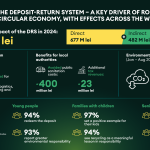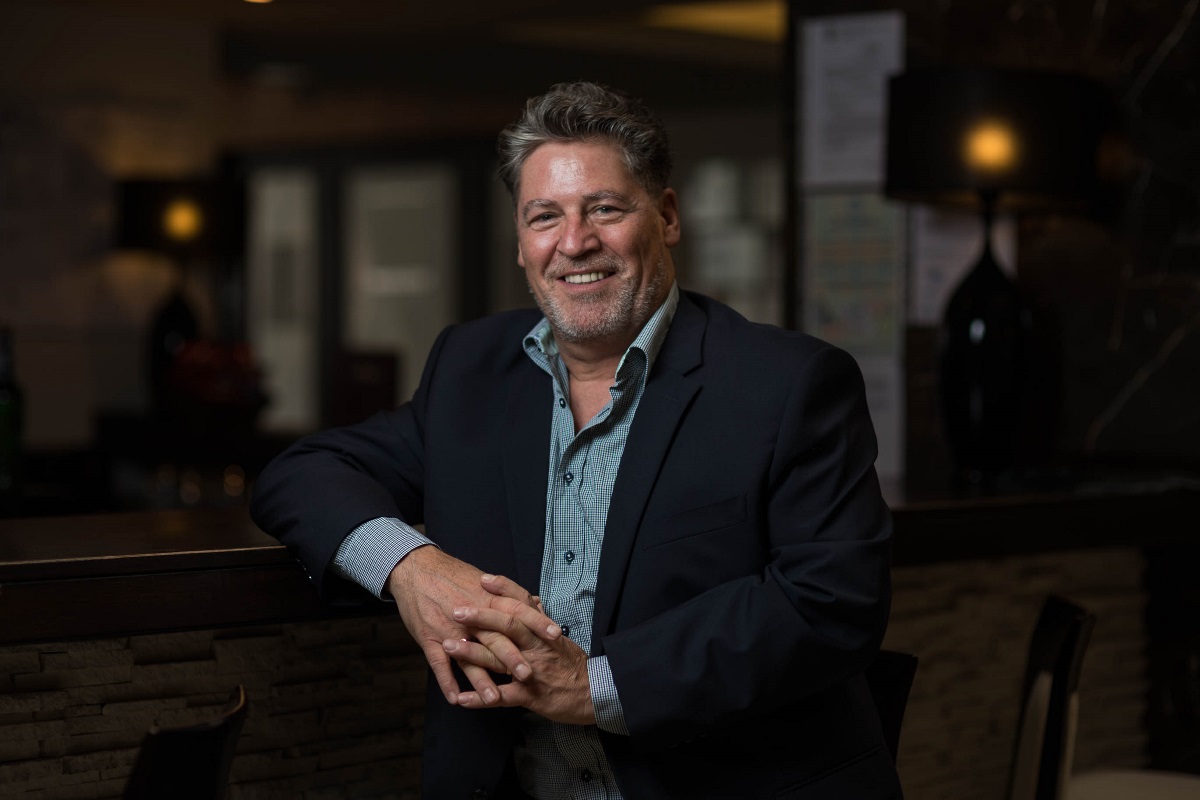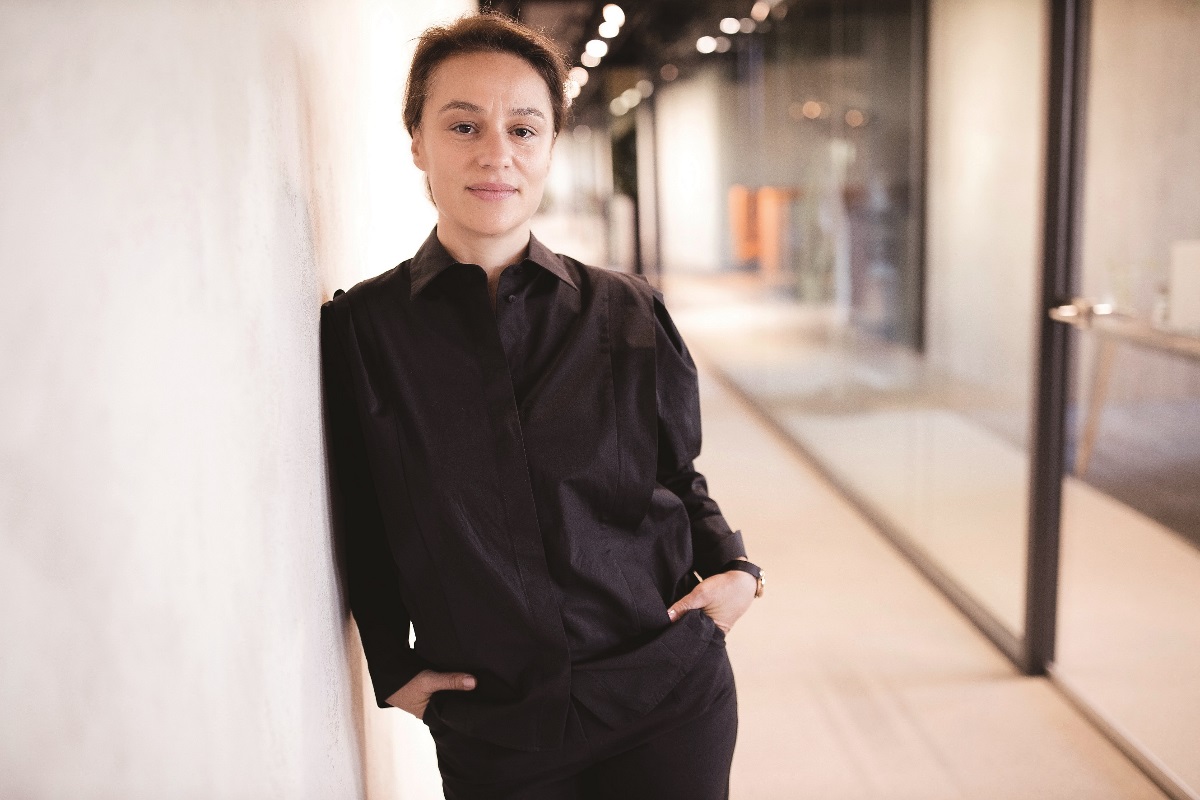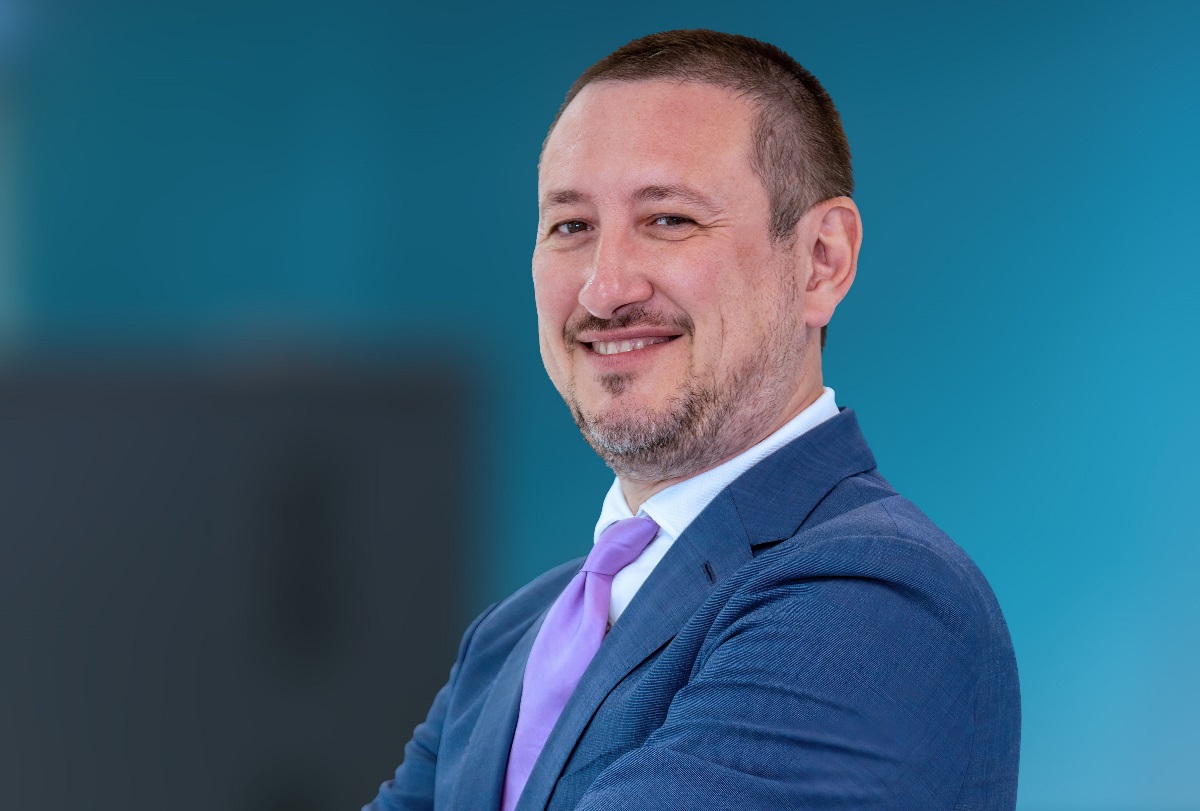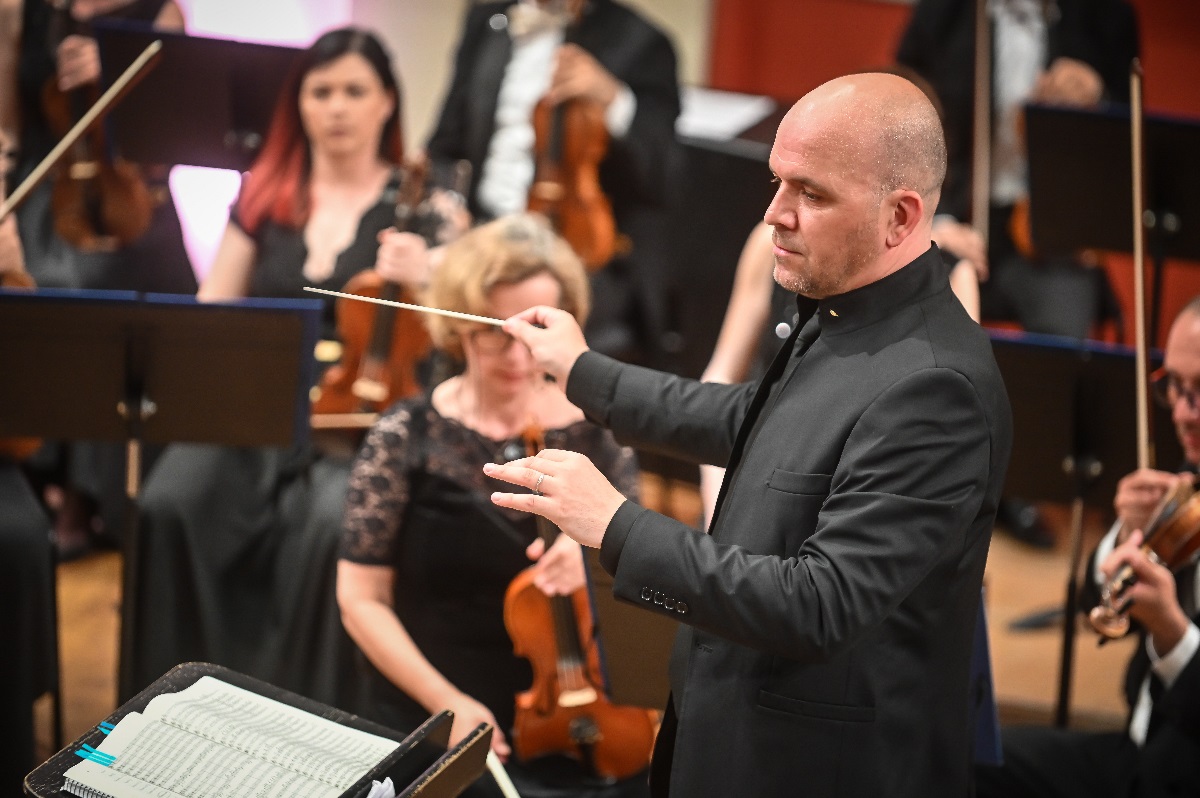
Conductor Cristian Lupeș, Manager of the State Philharmonic in Sibiu: “People always need an outlet, a magical place where everyday worries disappear. Our mission is to provide this place through music”
This summer marks four years since you took over the leadership of the State Philharmonic in Sibiu. What are the most important achievements that you and the team you lead have had during this period?
Indeed, August marks 4 years since I won the competition for the Sibiu Philharmonic manager job, and in this time, together with the team, I have had my share of challenges—first of all, the pandemic—and countless achievements. The main objective of the management project with which I won my first term of office was to bring Sibiu Philharmonic out of the shadow cone in which it found itself, as the institution was not very well known to the public outside the city walls. To this end, I proposed a series of new programs and projects, with a different target audience than the usual Thursday concerts, to diversify the audience and attract new categories of beneficiaries, especially children and young people. Another direction we proposed was to manifest the potential of the material heritage of the Philharmonic, which operates in a historical building with a special history: it is the first theater ever built on the present-day territory of Romania and the only covered European stage located in a former military bastion. I wanted the orchestra to evolve in terms of quality, so I invited talented conductors and vocalists, and I diversified the repertoire to include Romanian compositions, but also modern and contemporary ones.
The road from wish to reality is not always easy, but having a committed and dedicated team by my side is essential. A Philharmonic entails teamwork, where the contribution of each member counts for the final result. Together, we have grown as they say in fairy tales, “in one day as others in seven”, with responsibility, perseverance, inspiration, dependability, and good faith.
With these qualities at our side, we managed to organize 235 events in 2022, compared to the 70 organized in 2019. These include not only symphonic concerts performed by the orchestra but also chamber concerts, activities for children, extraordinary concerts, tours, and partnership events. We organize 9 festivals, each with a different theme, so that everybody, old and young, each member of the community in Sibiu, as well as visiting tourists, can include Sibiu Philharmonic in their program. The diversification of the cultural offer led to an increase in the number of paying beneficiaries in 2022 to a higher level than in 2018 and for this, we thank our audience.
We have opened to the public spaces of the Philharmonic that are now very popular: the Rooftop, which hosts concerts every summer, and last year, in May, we had as a guest His Majesty King Charles III; the Philharmonic Cellar, where jazz concerts, cultural conferences and, more recently, the Music Café take place; the Philharmonic Esplanade, which in 2020 became a symbol of resistance through culture in the face of the COVID-19 pandemic.
We have carried out a project to repair and modernize some spaces and terraces of the Philharmonic, and now all the lighting in the building is environmentally friendly. We are taking steps to implement the documentation for the approval of intervention works including the modernization of the concert hall. We have the necessary facilities for a video studio, which has been essential for activities during the pandemic. The entire administration is digitalized.
These things have not gone unnoticed, as evidenced by the most recent honors: the Music Prize awarded by Radio Romania Cultural; the Music Critics, Editors, And Producers Union’s Excellence Award for the “Brave New Music” festival; and, of course, the Order of Cultural Merit in the rank of Commander, conferred by His Excellency, Mr. Klaus Iohannis, President of Romania, in 2021.
For all this, I thank the team, but also the County Council of Sibiu, without whose support our work would not be possible.
The last few years have been a rough patch, marked by pandemics, conflicts, crises, and socio-economic uncertainties, almost unprecedented in recent history. How have these challenges influenced the dynamics of interest and access to cultural events?
Humanity has gone through many such periods, and art and culture have always played an important role. On the one hand, difficult times have, perhaps paradoxically, been sources of inspiration and, above all, innovation for artists as they have had to adapt or respond to the demands of new contexts. At the same time, society has relied and continues to rely on art and culture to cope with difficult times and even to survive. Especially in the context of globalization, it is culture that makes us unique, on the one hand, but leaves open the way for dialogue, on the other.
We have chosen not to be passive and take refuge in the security of the indefinite contract, quietly waiting for better times to come. We have chosen to be thankful that we have this stability and we have found ways to continue to reach out to our public, to support them morally in the difficult times we are going through together. So, during the pandemic, we made short videos with various musical themes, concerts, and online recitals, and when time and law allowed, we played music outside. We adjusted our schedules to unpredictable rules and situations and managed to overcome the difficulties.
I believe that people always need an outlet, a magical place where everyday worries disappear. Our mission is to provide this place through music.
What is the profile of the Romanian audience fond of symphonic music and how important is music education in the life of the city?
In Sibiu, the audience of the regular symphonic concerts is loyal, urban, and cultured. Unlike the previous years, I am pleased to notice that the average age of the audience tends to decrease, especially for concerts whose repertoire is unconventional (contemporary music, symphonic rock, jazz). I am happy to see parents with children in the audience.
Music education is essential if we want to have, in 20 to 30 years, not only audiences in the hall but also musicians. That’s why we organize many activities for children, both didactic concerts and creative music workshops. In 2022, we hosted 87 such events, and the impact was direct and very visible: the didactic concerts are very successful, so every time we schedule at least two performances on the same day, and we were happy to see that some of the children who attended the creative workshops later brought their parents to the concert.
It is up to us, the institutions, to propose programs and projects that are truly attractive to children (and their parents), but also to teenagers, a demographic segment that is quite difficult to approach and therefore often neglected. The more diversity in our programs, without sacrificing quality and without forgetting that the purpose of public cultural institutions is not to showbiz, the greater the chances of attracting the Beethoven-fearing or reluctant public. The more effectively we communicate our message on the right channels, the more relevant we will be to more people. For the time being, we seem to remain under the specter of the idea that symphonic music is a monument, something accessible only to a carefully selected public (we do not know by whom). However, we should not forget, if we opt for this approach, that one of the principles laid down in the 1964 Venice Charter on the conservation and restoration of historic monuments is that “the conservation of monuments is always facilitated by their allocation to social uses.” It is therefore essential to know how to adapt the discourse so that it reaches as many people as possible.
What is Romania’s current position on the international scene in terms of concerts and live orchestra performances?
Currently, Romania has only one internationally renowned musical event dedicated to the symphonic phenomenon, namely George Enescu International Festival.
In addition, of course, there are many valuable Romanian musicians living and working in Romania or in other countries, there are cultural partnerships, tours, and international projects involving Romanian musicians or orchestras. There are contexts in which Romanian orchestras manage, sometimes with great efforts, to bring important names on their stages—of course, especially in Bucharest, but more recently also in Sibiu, Brașov, Satu Mare, Oradea, Bacău, Târgu Mureș and Timișoara—in the context of the Cultural Capital.
It is important for the new generation of people who manage musical cultural institutions to consist predominantly of people who have studied or worked in other countries and who come with a different and diverse professional experience. There is good communication between us, but also a healthy and constructive competition, which is essential if we want to imagine Romania’s relevance to the international music scene in the future. Management aimed at increasing the quality of orchestras is one of the ways to achieve this goal, but to succeed, high schools and universities must attract teachers and future performance-oriented students. From the institutional point of view, it is important to make sustained efforts and try to aim as high as possible, to be aware that the time when grants were awarded for the mere fact of being “artists” tends to fade away, especially in the context of the crisis that society is going through, to be more proactive and professionally responsible. If we achieve this, at the country level, not only at the level of an institution, I believe we will have the opportunity to take the necessary steps to be relevant on the international scene.
At the moment, unfortunately, these moments are rather exceptions.
Migration toward the online environment, digitalization, and artificial intelligence are increasingly part of everyday life. What are the benefits of these paradigm shifts and to what extent could they transform the artistic experience in the near future?
I think technology has long since entered into a relationship with art and the artistic experience, and this is natural: both are endeavors of discovery and intellectual curiosity. I think it was the pandemic that shifted the focus from an artistic approach to a practical one, so technology became the medium through which, for a while, we were able to enjoy those experiences that we were used to rather live.
For the Sibiu Philharmonic, the existence of a digitalization process before the pandemic meant an immediate acclimatization to the new situation: we were the first in Romania to broadcast a concert online, even before the state of emergency was declared. The Internet helped us to be seen by much more people than would be possible in the concert hall, and this helped our reputation grow. I think that, in addition to the outdoor events that followed in 2020, this approach helped us attract a younger audience.
Looking back, I can now say that, in a premonitory-ironic way, in 2019, I played with the Sibiu Philharmonic, during the Enescu Festival, the Concerto for conductor and orchestra, a work dedicated to me by the composer Constantin Basica. The premise of the piece is that a quantum computer—that is, an artificial intelligence—wants to learn to be a conductor, and for that it needs, of course, a professional learning experience. During the concert, I put on an EEG headset, calibrated myself to the sensors that altered the sounds of the instruments based on my movements, and broke the timeline—all so that GEBOCAR(q)IS (Gesture-Based Orchestral Control via Artificially Quasi-Intelligent System, editor’s note) could learn to conduct. Then came the pandemic, during which the computer was the medium through which we could still live those experiences when we struggled to record ourselves at home and synchronize our sound as if we were on stage together.
Thus, is technology already immersed in art or the other way around? And there are many experiences created this way. This year’s edition of the Brave New Music Festival, in November, is strongly linked to the presence of technology and electronic art in music.
As we returned to our post-pandemic normality, we found that people breathed a sigh of relief and were delighted to hear live instruments again, without the mediation of screens and loudspeakers. For our generation, direct, hands-on contact with music is still very relevant, but will it be so for future generations as well? Of course, the answer lies with them, but also with us and how we send them the information we consider important.
You are considered both the most nonconformist Romanian conductor of the moment and a successful manager. What does a typical day “at the office” look like for you? To what extent are these two activities complementary and how do you manage to balance them?
Fortunately, no two days are the same and, although it may seem exhausting, it keeps me on my toes. My work as a manager did not interfere with my work as a musician, so at the Philharmonic, together with my team, I try to provide the best possible environment for musicians, invited or hired, to do their work—in terms of organization, working conditions, facilities, etc. At the same time, when I am invited to other orchestras, in addition to the joy of making music, I try to pay attention to the institutional models I encounter.
What are the main events and projects of the Sibiu Philharmonic in 2023 and how is the program shaping up in the second half of this year?
This year, the Sibiu Philharmonic is invited for the third consecutive time to the George Enescu International Festival, where it will give a concert at the Radio Hall on September 16, under the baton of American conductor Roderick Cox.
Until then, a summer full of festivals awaits us, starting with our presence at the anniversary edition of the Theater Festival, followed by the Romanian-American Music Days, which celebrates its 20th anniversary this year, the Carl Filtsch International Piano Competition, where we expect young pianists eager to make a name for themselves. The Concerts on the Rooftop will provide the best soundtrack to the most spectacular sunsets of the summer, and after we return from the Enescu Festival, we will turn the city of Sibiu into the capital of opera with the Sibiu Opera Festival, in a special edition. We open the season, look to the future with Brave New Music, and, in December, Regalos Musicales brings a premiere dedicated to the National Day of Romania, in addition to the beloved Christmas and New Year’s concerts.
Interview by Ioan Dornescu
Share
Share








